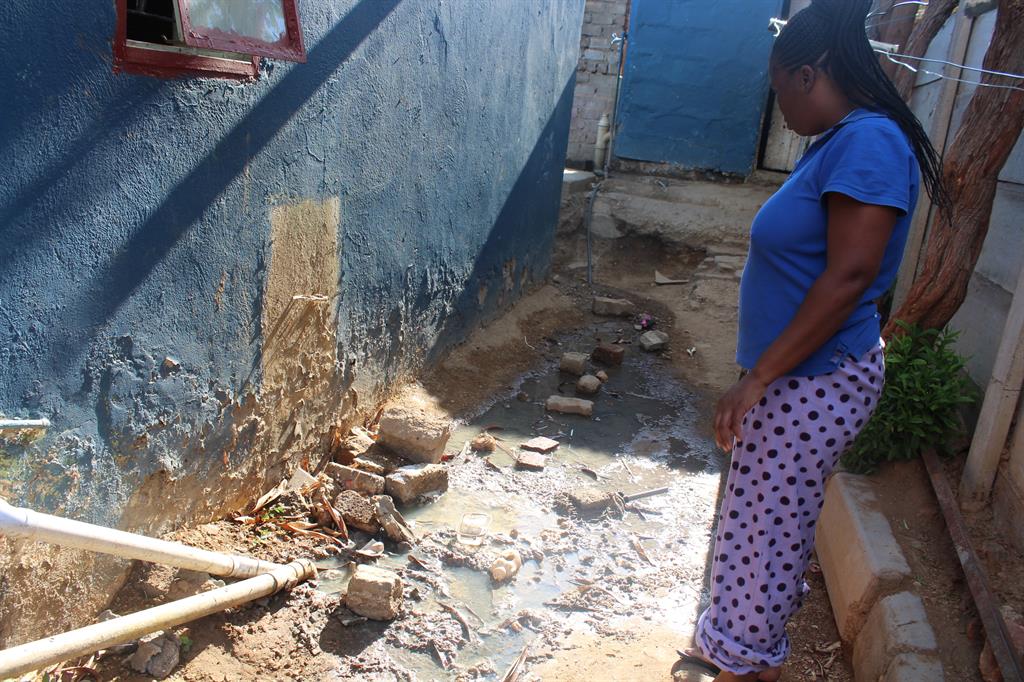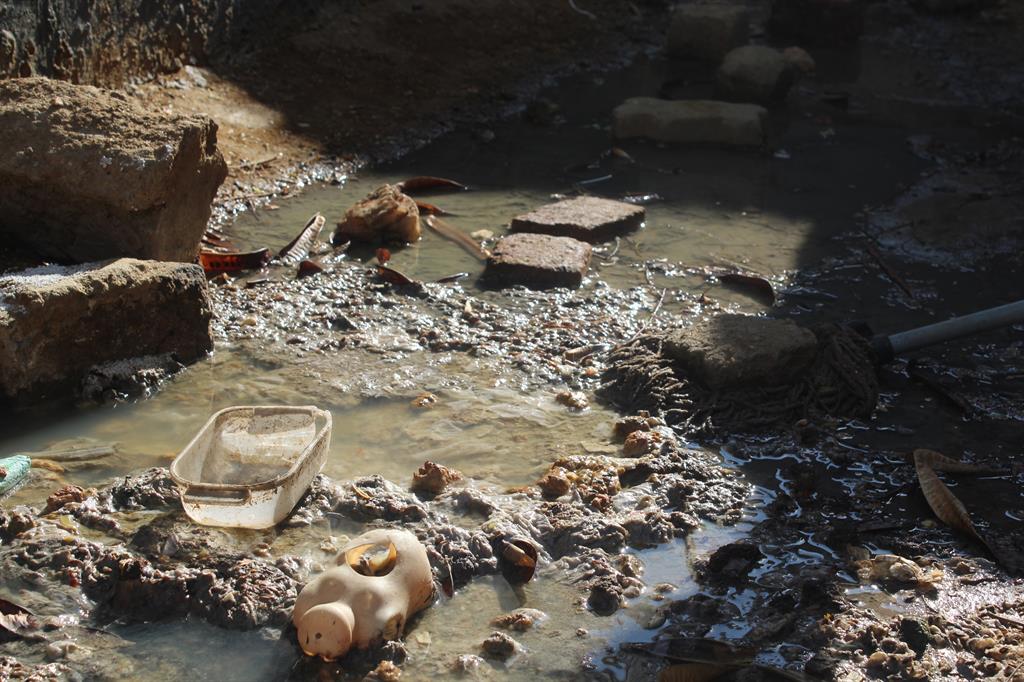Spread of hepatitis E unique to Namibia
A lack of sanitation in rural areas, along with the travelling patterns of Namibians, has made the way hepatitis E has spread wholly Namibian.
The way in which the hepatitis E outbreak has spread in Namibia is unique in the world, health experts say.
Since the first cases were reported in Windhoek's Havana and Goreangab informal settlements on 13 October 2017, the disease has spread to six other regions: Erongo, Omusati, Ohangwena, Oshana, Oshikoto and Kavango East.
The spread is the result of frequent travel between Windhoek and those regions and a dire lack of toilets, safe water points and poor personal hygiene.
Although Uganda and South Sudan have experienced hepatitis-E outbreaks of similar duration as Namibia, Eric Dziuban, country director for the Centres for Disease Control and Prevention (CDC) in Namibia, says what is unique about this outbreak is how it has spread throughout the country.
Last week, the health ministry announced that 3 973 hepatitis E cases had been confirmed countrywide by the end of November.
There have been 34 deaths, including 16 pregnant or post-partum women.
“Over 80% of cases recorded in these regions were linked to Havana and Goreangab informal settlements in Windhoek by travel history,” the ministry confirmed.
Surveys have confirmed that the hardest hit areas by the outbreak are informal settlements with inadequate water and sanitation infrastructure, where open defecation is common.
“This calls for behavioural change of affected community members,” the ministry stressed.
While authorities have made efforts to improve access to toilets and water, frequent vandalism has been reported.
Take care this holiday
With the upcoming festive season, authorities are urging hosts and organisations of public gatherings to “ensure provision of safe drinking water, hand-washing facilities with soap and running water, adequate ablution facilities with hand-washing stations and adhering to the World Health Organisation's food safety practices.”
Dziuban underlined too that “poor hygiene and sanitation conditions, like those in informal settlements, make it difficult to contain the outbreak.”
This month the United States embassy in Namibia, through the CDC, handed over 600 rapid test kits and personal protective equipment to the health ministry.
The use of these kits in the field and in clinics and hospitals will allow for the immediate diagnosis of hepatitis E.
Currently, a diagnosis is confirmed through a blood test, which on average requires more than a week to produce results and takes even longer in the regions.
The kits will be distributed for use in the field and at facilities that have a high volume of pregnant women.
These test kits will be particularly useful for the diagnosis of pregnant women who are most vulnerable to hepatitis E infection.
The CDC has provided ongoing assistance to the health ministry, including inviting a number of expert epidemiologists who provided intensive capacity-building support to improve the epidemiological investigation.
The support is set to continue with the next stage being to help the ministry conduct a knowledge, attitudes, and practices (KAP) survey in Havana and Goreangab, that will help identify the specific type of hepatitis E virus that is affecting the country.
Dziuban said the survey's goal was “to learn what behaviours may be contributing to the ongoing transmission. By having data on actual practices and behaviours, it will allow for designing effective interventions and water, sanitation and hygiene (WASH) strategies.”
The ministry announced that a team of 16 data collectors, six field supervisors and three drivers will cover 640 households in Havana and Goreangab over a nine-day period, which began on 3 December.
Most of the funding for the response was national but aid in various forms was received from the US embassy through the CDC, as well as the World Health Organisation (WHO), Unicef and the Red Cross.
JANA-MARI SMITH
Since the first cases were reported in Windhoek's Havana and Goreangab informal settlements on 13 October 2017, the disease has spread to six other regions: Erongo, Omusati, Ohangwena, Oshana, Oshikoto and Kavango East.
The spread is the result of frequent travel between Windhoek and those regions and a dire lack of toilets, safe water points and poor personal hygiene.
Although Uganda and South Sudan have experienced hepatitis-E outbreaks of similar duration as Namibia, Eric Dziuban, country director for the Centres for Disease Control and Prevention (CDC) in Namibia, says what is unique about this outbreak is how it has spread throughout the country.
Last week, the health ministry announced that 3 973 hepatitis E cases had been confirmed countrywide by the end of November.
There have been 34 deaths, including 16 pregnant or post-partum women.
“Over 80% of cases recorded in these regions were linked to Havana and Goreangab informal settlements in Windhoek by travel history,” the ministry confirmed.
Surveys have confirmed that the hardest hit areas by the outbreak are informal settlements with inadequate water and sanitation infrastructure, where open defecation is common.
“This calls for behavioural change of affected community members,” the ministry stressed.
While authorities have made efforts to improve access to toilets and water, frequent vandalism has been reported.
Take care this holiday
With the upcoming festive season, authorities are urging hosts and organisations of public gatherings to “ensure provision of safe drinking water, hand-washing facilities with soap and running water, adequate ablution facilities with hand-washing stations and adhering to the World Health Organisation's food safety practices.”
Dziuban underlined too that “poor hygiene and sanitation conditions, like those in informal settlements, make it difficult to contain the outbreak.”
This month the United States embassy in Namibia, through the CDC, handed over 600 rapid test kits and personal protective equipment to the health ministry.
The use of these kits in the field and in clinics and hospitals will allow for the immediate diagnosis of hepatitis E.
Currently, a diagnosis is confirmed through a blood test, which on average requires more than a week to produce results and takes even longer in the regions.
The kits will be distributed for use in the field and at facilities that have a high volume of pregnant women.
These test kits will be particularly useful for the diagnosis of pregnant women who are most vulnerable to hepatitis E infection.
The CDC has provided ongoing assistance to the health ministry, including inviting a number of expert epidemiologists who provided intensive capacity-building support to improve the epidemiological investigation.
The support is set to continue with the next stage being to help the ministry conduct a knowledge, attitudes, and practices (KAP) survey in Havana and Goreangab, that will help identify the specific type of hepatitis E virus that is affecting the country.
Dziuban said the survey's goal was “to learn what behaviours may be contributing to the ongoing transmission. By having data on actual practices and behaviours, it will allow for designing effective interventions and water, sanitation and hygiene (WASH) strategies.”
The ministry announced that a team of 16 data collectors, six field supervisors and three drivers will cover 640 households in Havana and Goreangab over a nine-day period, which began on 3 December.
Most of the funding for the response was national but aid in various forms was received from the US embassy through the CDC, as well as the World Health Organisation (WHO), Unicef and the Red Cross.
JANA-MARI SMITH






Comments
Namibian Sun
No comments have been left on this article